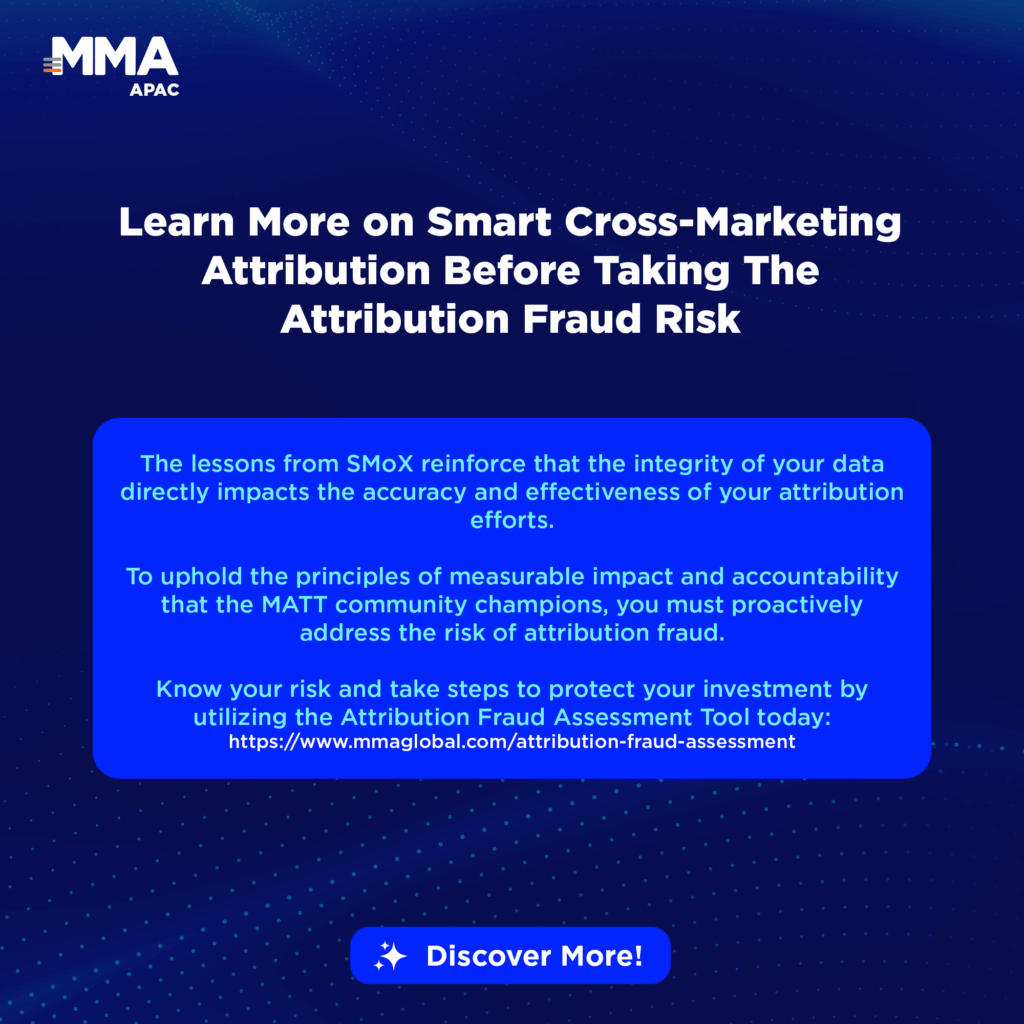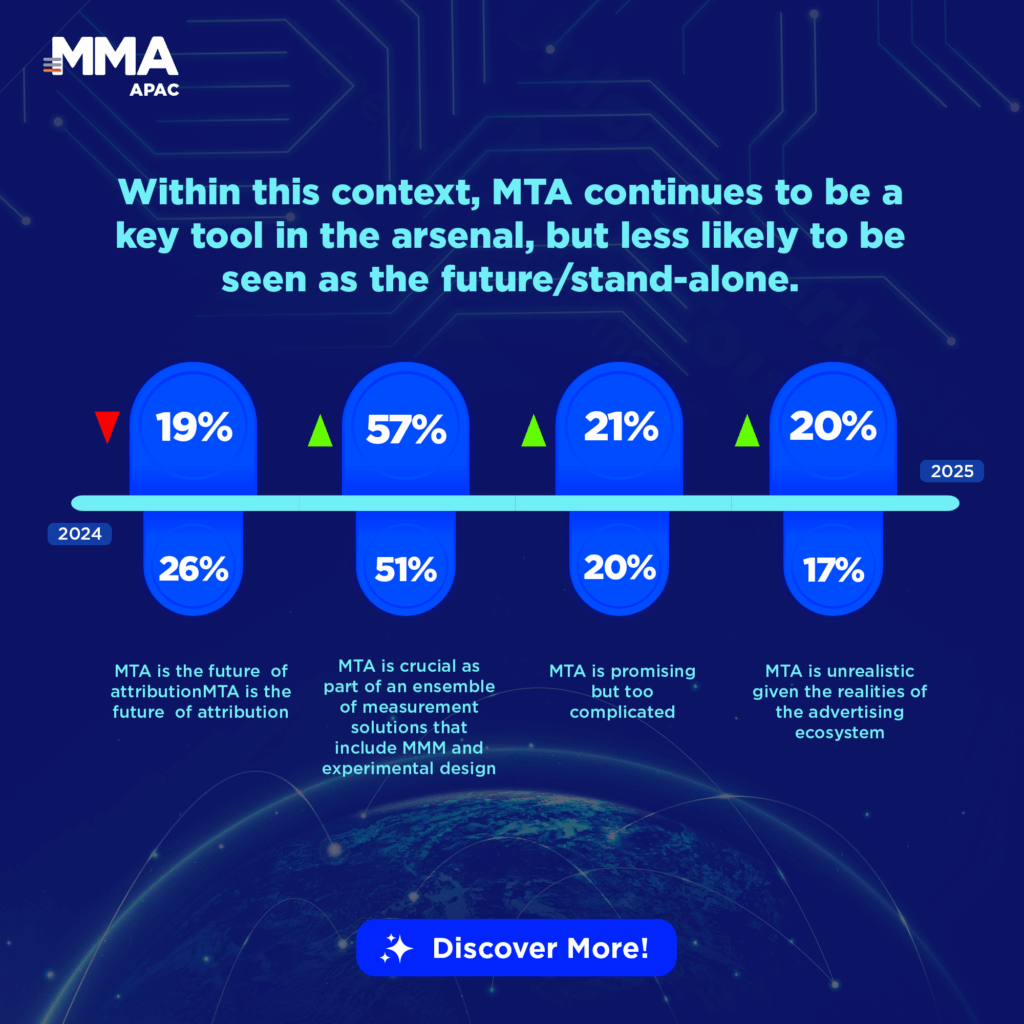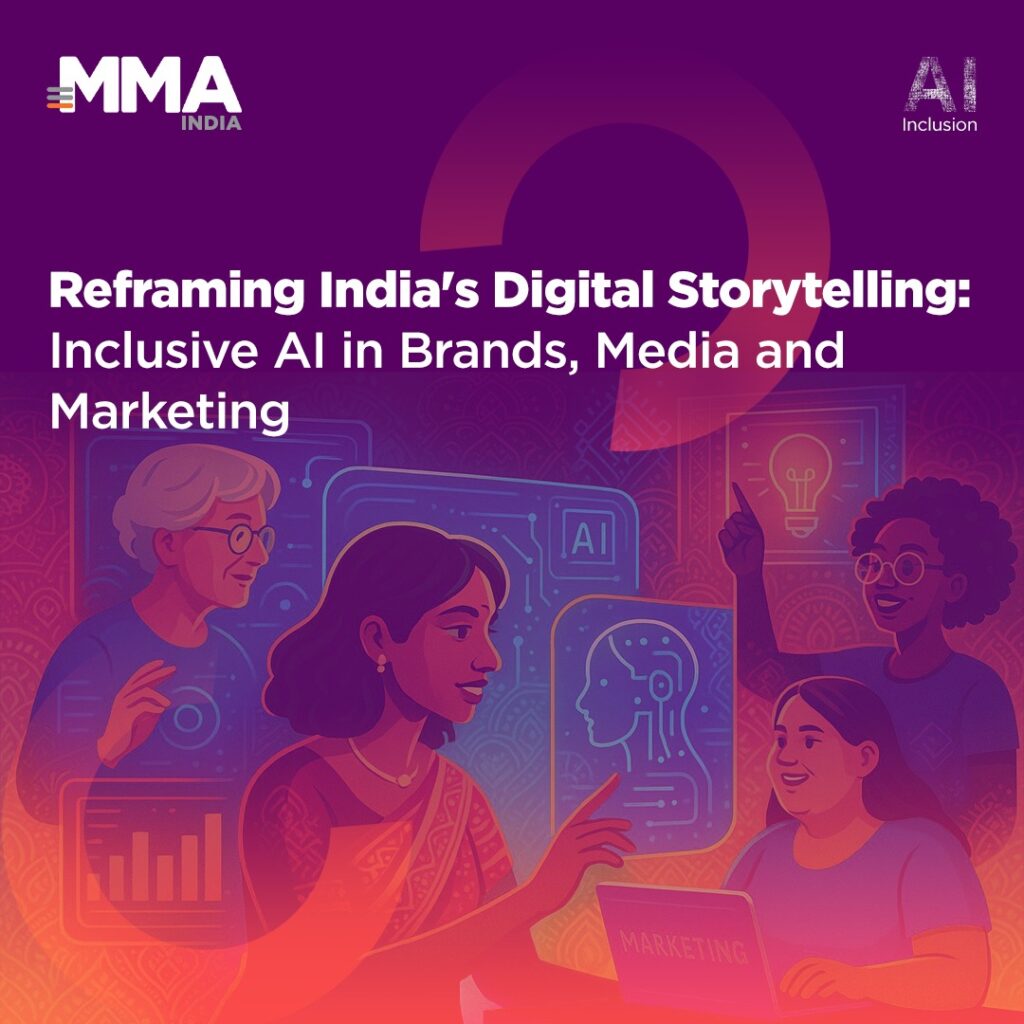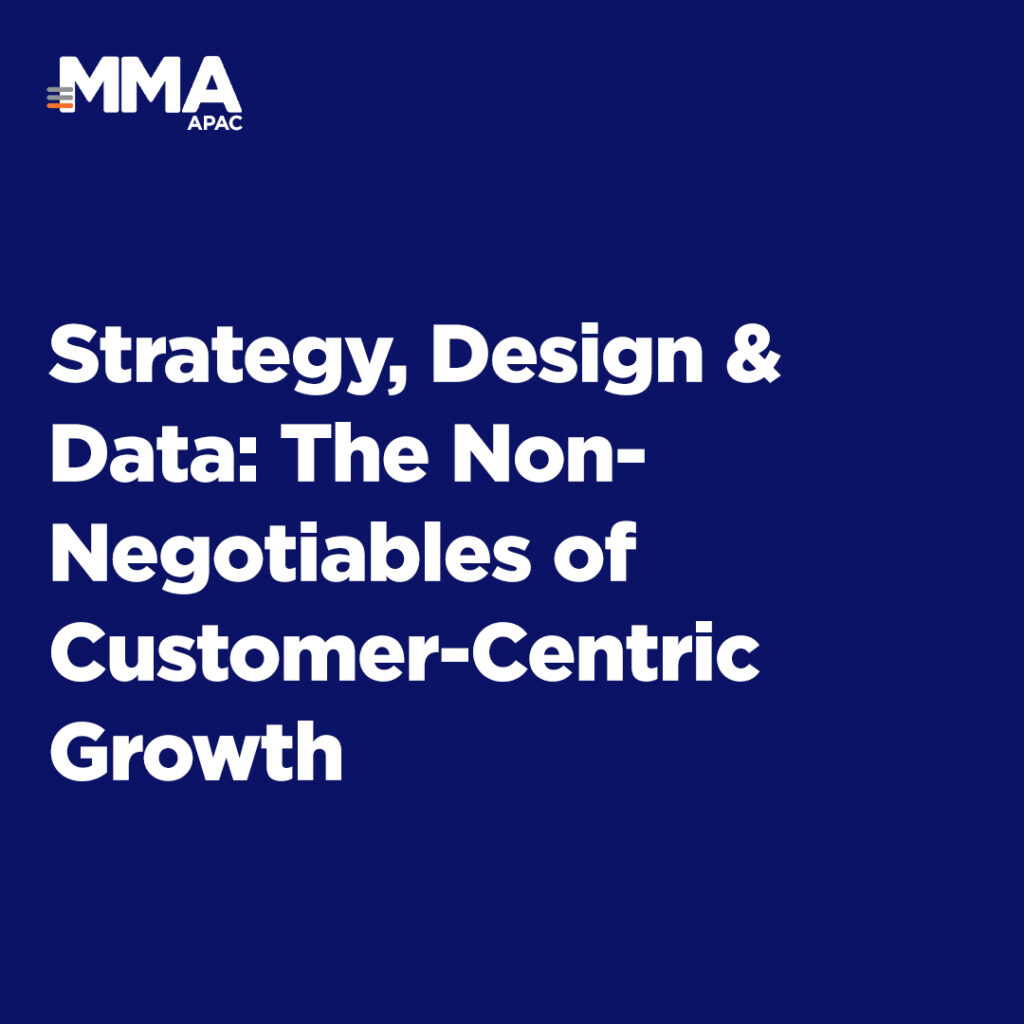Harnessing the power of attention is critical for the success of ad campaigns. The digital space has an abundance of platforms competing for consumer attention. Within each platform, pieces of content compete to attract attention with visuals and sound, increasing the time the user spends scrolling through. The constant stream of content and the narrowing of the collective human attention span present a challenge for marketers to capture and maintain the audience’s attention.
Over the years, the concept of attention in marketing has evolved significantly. Tailored, attention-focused strategies have become imperative for brands seeking to make an impact. But how can brands make an impact when consumers reportedly have an average attention span of just 8 seconds and are consuming content and ads every waking second? Implementing attention-focused ad strategies in 3 steps is the way to go for driving outcomes in such a competitive landscape.
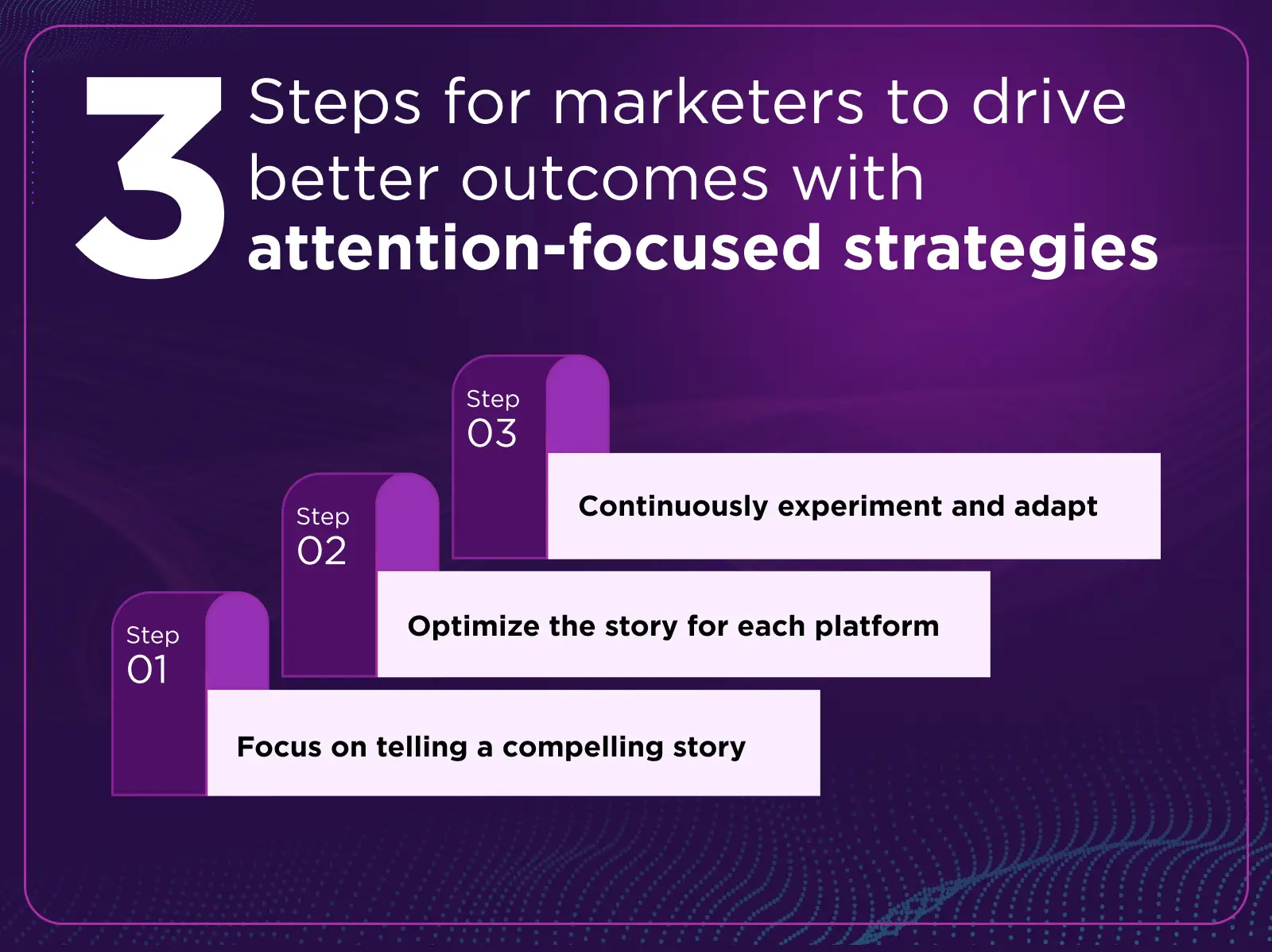
Focus on telling a compelling story
Crafting a narrative that resonates emotionally with the target audience is crucial. Emotional engagement and good storytelling enhance memorability. Leveraging deep insights into audience preferences and behavior to disseminate the brand’s message is at the heart of this strategy.
Authenticity, visual consistency in the communication across platforms and clear and concise CTAs in the copy in all creatives are essential to lead the consumer from attention to action. A well-timed, contextually relevant ad is the difference between a fleeting glance and a conversion. Continuous experimentation and taking note of the learnings are pivotal to success.
Carefully chosen celebrity endorsements and influencers can amplify a brand’s message, but the key is alignment with the brand’s values for maximum impact. For instance, Disney+ Hotstar launched an ad featuring the renowned cricketer Kapil Dev to announce free live streaming of ICC Men’s World Cup 2023. He was able to reach the target audiences effectively, invoking nostalgia and increasing brand recall among the audiences. Similarly, pharmaceutical companies sign up expecting actors to promote pregnancy tests. Since the actors are already in the news for their big life update and are talking to the media about it, the brand can slide into the larger conversation organically and deepen the connection with the target audiences.
Optimize the story for each platform
Once an appealing ad piques the audience’s attention, understanding the nuances of each platform is central to making the consumers take active action while interacting with the brand. For instance, reels are the best way to grab attention on Instagram. Short-form content is popular on most platforms.
Marketers should tap into different platforms but never post the same content everywhere. Optimizing and tailoring the content as per the specifics of the platform is crucial. Native content that aligns with audience behavior ensures the quickest climb on the ladder of engagement.
On social media, virality lies in leaning into the power of memes and topical content. Marketers must leverage moment marketing and create topical content while staying within the brand guidelines, to boost visibility and lay the groundwork for establishing connections with potential customers. Building a long-lasting relationship with them involves adding value to their lives, not just focusing on selling.
Continuously experiment and adapt
Ensuring a seamless and captivating mobile experience for users is important for capturing the impact of value-addition, as reports indicate that two-thirds of mobile advertising triggers an imprint on the human brain within 0.4 seconds. Given the context of 8-second attention spans, this data highlights the significance of optimizing for mobile devices.
However, ad fatigue has become a serious concern with soaring mobile usage. To counteract information overload, brands must utilize data analytics and A/B testing to ensure ads remain fresh and relevant. Brands must experiment with new technologies to maintain the efficiency of their campaigns. Immersive storytelling, gamification, and hyper-personalization are some aspects brands should experiment with. Using AI to enhance campaign performance with insights and personalization can go a long way in increasing the efficiency of these efforts.
To summarize, advertising in the digital age requires a strategic blend of attention-focused approaches, platform optimization, personalized content, and a deep understanding of audience behavior. The way ahead involves embracing emerging technologies and continually adapting to an ever-changing landscape. Brands able to captivate the audience, engage emotionally, and build lasting connections with consumers will succeed in the race for attention.

















